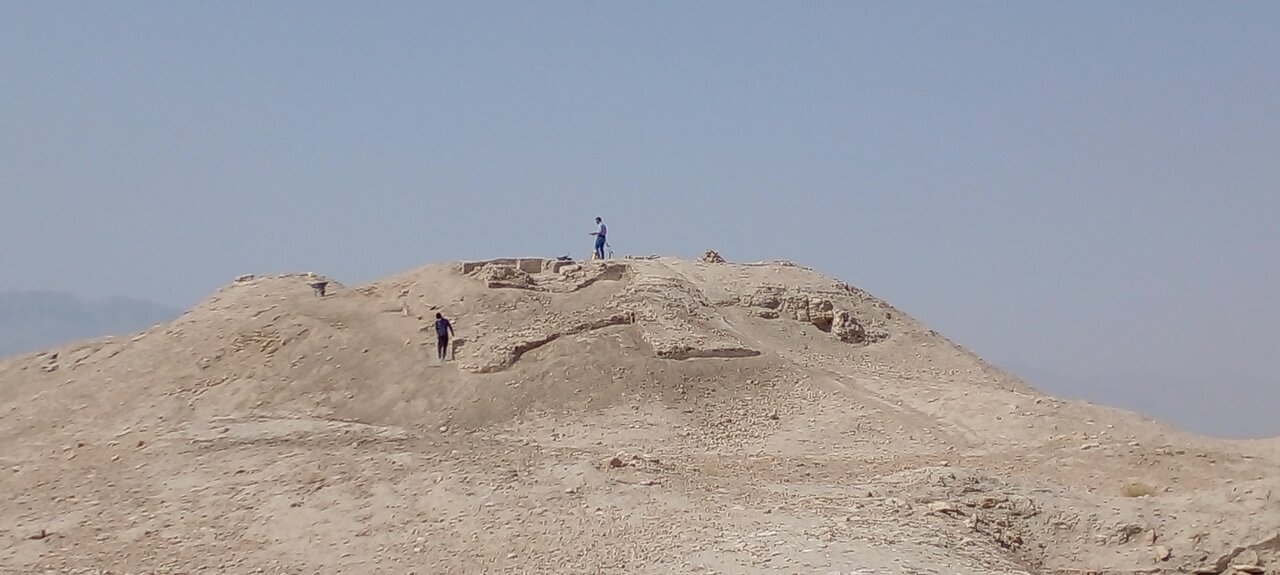‘Dragon-bodied’ fort in southern Iran dates from Sassanid era, first archaeological dig finds

TEHRAN – A recently finished archaeological excavation on the ruins of a massive fort is southern Iran reveals the monument was initially used in Sassanid era and later during the early Islamic epoch up to the late Qajar era.
Covering some 20 ha in area, Qale Ezhdeha-Peykar, whose name literary translates into ‘dragon-bodied’ fort, is situated on a mound in Lar county of Fars province, southern Iran, Mehr reported on Tuesday.
The [archaeological] site consists of three ridges on the north, middle, and south, and was surrounded by a defensive wall in which watchtowers were built at regular intervals, the remains of which can be seen today.
The excavation indicates the history of settlement in this area stretches to the Sassanid era (224–651) and then it continued to be inhabited from early Islamic centuries until the end of the Qajar period (1789-1925).
Conducted under the supervision of the Research institute of Cultural Heritage and Tourism, the dig makes the first archaeological season on the fortress, the report said.
The Sassanid era (224 CE–651) is of very high importance in the history of Iran. Under Sassanids, Persian art and architecture experienced a general renaissance. Architecture often took grandiose proportions, such as palaces at Ctesiphon, Firuzabad, and Sarvestan, which are amongst the highlights of the ensemble.
Crafts such as metalwork and gem engraving grew highly sophisticated, yet scholarship was encouraged by the state. In those years, works from both the East and West were translated into Pahlavi, the language of the Sassanians.
The Sassanid archaeological landscape also represents a highly efficient system of land use and strategic utilization of natural topography in the creation of the earliest cultural centers of the Sassanid civilization.
The Muslim conquest of Persia, also known as the Arab conquest of Iran, led to the fall of the Sasanian Empire of Iran (Persia) in ca. 651 and the eventual decline of the Zoroastrian religion. The rise of Muslims coincided with an unprecedented political, social, economic, and military weakness in Persia.
In 2018, UNESCO added an ensemble of Sassanian historical cities in southern Iran — titled “Sassanid Archaeological Landscape of Fars Region”-- to its World Heritage list. The ensemble comprises eight archaeological sites situated in three geographical parts of Firuzabad, Bishapur, and Sarvestan. It reflects the optimized utilization of natural topography and bears witness to the influence of Achaemenid and Parthian cultural traditions and Roman art that later made a significant impact on the architecture and artistic styles of the Islamic era.
AFM
Leave a Comment